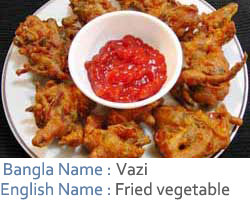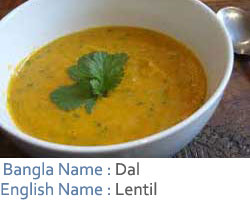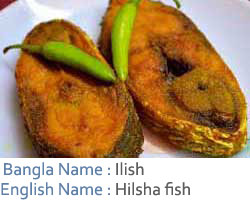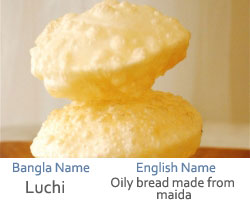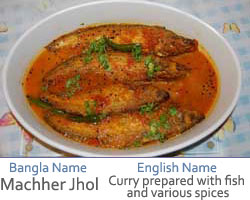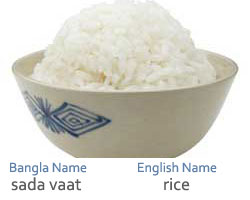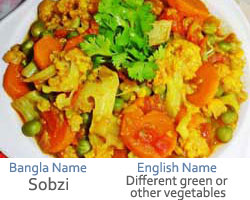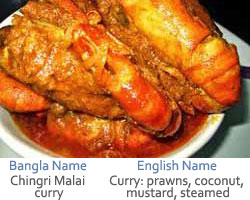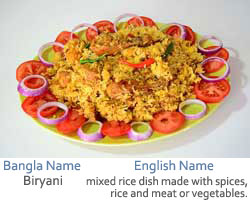A country that is a diverse and intriguing mix of culture, tradition and unforgettable beauty is an apt description of Bangladesh. Decorating the landscape and diverting attention away from the concrete jungles and bustling cities, visitors will find a world of sparkling rivers, breathtaking mountains and spectacular adventures waiting around every corner. Located in South Asia, Bangladesh has been fighting poverty and establishing economic stability since its independence in 1971. Even though it is known to be one of the most highly populated countries in the world, it is also home to fertile plains, magnificent wildlife and an extraordinary history that captivates the imagination through the buildings and monuments that remind present and future generations of its unique heritage. It’s topical, mild winters and humid summers make Bangladesh a destination that can be visited all year round.
When it comes to attractions, Bangladesh is limitless. Walking through establishments, such as the Science Museum, National Museum, Folk Art Museum, Liberation War Museum and Zia Memorial Museum, allows visitors to travel through time, looking back at the history and moments in time that defined the future of the country. Over and above the museums, there are many memorials and places of interest to visit, such as the Old High Court Building, the Buddhist village of Ramu, the Natore Palace, National Memorial and the Lalbagh Fort that was constructed in 1678. Bangladesh is also known for its archeological sites, and Pahapur, Mahasthanragh are breathtaking windows into ancient times, the civilizations of the time and their architectural genius that created functional villages and structures. Bangladesh is more than just a holiday destination - it is a place of wonder, discovery and cultural magnificence.
Posts about Bangladesh
Page development is in process. If you are a citizen of this country and would like to help develop the Country Page to show your national pride, please refer to the instructions identified in the Country Page guidelines posted here.
History
Modern Bangladesh emerged as an independent nation in 1971 after achieving independence from Pakistan in the Bangladesh Liberation War. The country's borders coincide with the major portion of the ancient and historic region of Bengal in the eastern part of the Indian subcontinent, where civilization dates back over four millennia, to the Copper Age. The history of the region is closely intertwined with the history of Bengal and the history of India.
The area's early history featured a succession of Indian empires, internal squabbling, and a tussle between Hinduism and Buddhism for dominance. Islam made its appearance during the 8th century when Sunni missionaries arrived. Later, Muslim rulers reinforced the process of conversion by building masaajid (mosques), and madrassas.
The borders of modern Bangladesh were established with the partition of Bengal and India in August 1947, when the region became East Pakistan as a part of the newly formed State of Pakistan following the Radcliffe Line. However, it was separated from West Pakistan by 1,600 km (994 mi) of Indian territory. Due to political exclusion, ethnic and linguistic discrimination, as well as economic neglect by the politically dominant western-wing, popular agitation and civil disobedience led to the war of independence in 1971. After independence, the new state endured famine, natural disasters and widespread poverty, as well as political turmoil and military coups. The restoration of democracy in 1991 has been followed by relative calm and economic progress.
Festival, Holidays, National events
Every festival, Holidays and National events are so much enjoyable; below you will find a list of all Festival, Holidays, and National events in Bangladesh and with some descriptions.
Shahid Dibash (Language Martyrs’ Day)
This national holiday gives citizens of Bangladesh the opportunity to reflect on the sacrifices made by many in an effort to protect Bangla as a national langue during a period in 1952 that came to be known as the Bengali Language Movement. The events at that time prompted UNESCO to observe 21 February as International Mother Language Day, a decision supported by Bangladesh and 28 other countries.
Shadhinota Dibôsh (Independence Day)
Independence Day is a national holiday in Bangladesh to commemorate the declaration of independence, and the beginning of the 1971 Bangladesh Liberation War. The day includes parades, with activities centered on the Jatiyo Sriti Soudho (National Martyrs’ Memorial) near Dhaka.
Pôhela Boishakh (Bangla New Year’s Day)
Activities on the Bangla New Years’ Day include visiting relatives, neighbors and friends, with special foods being prepared and shared. New Year fairs are held in various locations around Bangladesh, featuring entertainment, traditional performances, and market stalls selling handicrafts, toys, food and agricultural products.
Me Dibôsh (May Day)
Celebrated around the world, May Day or Labor Day, is an opportunity to display solidarity with workers around the world.
Vesak/Wesak/Vesakha (Buddha Day)
Also referred to as Buddho Pumima, this Buddhist holiday is a celebration of the birth, life, enlightenment and passing away of Gautama Buddha. It is determined by the traditional lunar calendar in Bangladesh. It is a time for Buddhists to gather at the temples, hoist the Buddhist flag, sing hymns, and offer flowers, candles and incense – the latter being a reminder than life is transient, and as flowers fade and candles and incense burn out, so too life withers and passes away.
Eid ul-Fitr
This holiday marks the end of Ramadan, a period of fasting and intense worship for adherents of the Muslim faith. Eid ul-Fitr includes expressions of thanks to Allah for strengthening them through Ramadan, with special services and processions taking place.
Krishna Janmaashtami
This holiday marks the birth of Krishna, an incarnation of the Hindu god Vishnu. Celebrations include dramatic productions based on the life of Krishna, dancing, singing and chanting holy mantras.
Durga Puja (Vijaya Dasami)
Stretching over five days, with the last day being a national holiday, this Hindu celebration commemorates Lord Rama’s victory over the evil demon Ravana. In Bangladesh, celebrations are held throughout the country, with Mymensingh being a popular gathering place for the festival.
Eid ul-Adha
This festival is a reminder of Ibrahim’s willingness to sacrifice his son Ishmael in obedience to God’s command. The occasion serves as a reminder to all Muslims that they should submit to God and be prepared to sacrifice anything that God wishes.
Bijôe Dibôsh (Victory Day)
Victory Day commemorates the Pakistani Army’s surrender to the Indo-Bangladeshi High Command in Dhaka in 1971.
Bôṛodin (Christmas Day)
Christmas is the celebration of the birth of Jesus of Nazareth
Languages
Bangla is the official language of Bangladesh and English is also used as a second language among the middle and upper classes and is also widely used in higher education and the legal system. Historically, laws were written in English and were not translated into Bengali until 1987, when the procedure was reversed. Bangladesh's Constitution and all laws are now in both English and Bengali. There are also several indigenous minority languages. It is also spoken in West Bengal. Bangalees protected Bangla from the clutches of Pakistani oppressors in 1952 by preventing Urdu from being the state language of East Pakistan where a vast majority of people spoke in Bangla. Bangalees had to sacrifice lives for their mother tongue on 21st February, 1952. 21st February being declared International Mother Language Day by UNESCO, Bangla reached the peak of maturity.
Nowadays many people watching Hindi movie, English movie that’s why peoples are tends to learning Hindi and English languages. When people talk then they are mixing many languages at a time while talking. It is affecting to Bangla language.
https://www.youtube.com/watch?v=K3sWu-VuNQM
https://en.wikipedia.org/wiki/International_Mother_Language_Day
Typical Food & Meals
Interesting places
1. Cox's Bazar: Seventy-five miles (120 Kilo miters sandy sea beach with a gentle slop). and it's the the tourist capital of Bangladesh.visit beach is the main reason which is shark free and good for bathing, swiming & sun-bathing. Lot's of local tourist & foreign tourist come Cox's Bazar to spend their leisure in Cox's Bazaar.
Cox's Bazar sea beach is crowded almost through out the year. It is a good place for sea bathing. Anyone can go there both by air and road from Dhaka and Chittagong.
Cox's Bazar is a small town. But the natural beauty of the town is very charming. The climate of this place is very fine. The Bay of Bengal lies on the south of it. There is a high standard tourist centre at this place. There are good arrangements for the stay of the tourists of different countries of the world. Many foreigners come to this place. The people of the place are very gentle. A lot of fish is available there.
2. Sundarbans: The Sundarbans is a natural region in the Bengal region comprising Eastern India and Bangladesh. It is the largest single block of tidal halophytic mangrove forest in the world.The Sundarbans covers approximately 10,000 square kilometres (3,900 sq mi) of which 60 percent is in Bangladesh with the remainder in India.The Sundarbans is UNESCO World Heritage Site.
The Sundarbans National Park is a National Park, Tiger Reserve, and aBiosphere Reserve located in the Sundarbans delta in the Indian state of West Bengal. Sundarbans South, East and West are three protected forests in Bangladesh. This region is densely covered by mangroveforests, and is the largest reserves for the Bengal tiger.
3. Ahsan manzil: Ahsan Manzil was the official residential palace and seat of the Dhaka Nawab Family.This magnificent building is situated at Kumartoli along the banks of the Buriganga River in Dhaka, Bangladesh. The construction of this palace was started in 1859 and was completed in 1872. It was constructed in the Indo-Saracenic Revival architecture. It has been designated as a national museum
In Mughal era, there was a garden house of Sheikh Enayet Ullah, the landlord of Jamalpur porgona (district), in this place. Sheikh Enayet Ullah was a very charming person. He acquired a very big area in Kumortuli (Kumartuli) and included it in his garden house. Here he built a beautiful palace and named it "Rongmohol" (Rangmahal). He used to enjoy here keeping beautiful girls collected from the country and abroad, dressing them with gorgeous dresses and expensive ornaments. There is a saying that, the foujdar of Dhaka (representative of mughal emperor) in that time was attracted to one of the beautiful girls among them. He invited Sheikh Enayet Ullah in a party one night and killed him in a conspiracy when he was returning home. That girl also committed suicide in anger and sorrow. There was a grave of Sheikh Enayet Ullah in the north-east corner of the palace yard which was ruined in the beginning of 20th century.
Probably in the period of Nawab Alibardi Khan around 1740 century, Sheikh Moti Ullah, the son of Sheikh Enayet Ullah, sold the property to the French traders. There was a French trading house beside this property. The trading house became wealthier after purchasing this property. In that time, French traders could do business here without paying any taxes by a decree from the emperor Awrangajeb. In that time, the French became very wealthy by doing business here in competition with the English and other European companies. They made a big palace and dug a pond for sweet water in the newly purchased property. The pond still exists in the compound of Ahsan Manjil which was called "Les Jalla" in that time. In the English-French war, French got defeated and all their properties were captured by the English. In 22 June of 1757, the French left the trading house with a fleet of 35 boats from the river station of Buriganga in front of Kumartuli.
In 1785, the French transferred the property to a French tradesman named Mr. Champigni, and retaken it at 1801. According to Paris agreement of 1814, the French claimed all their left properties at Dhaka, and in 1827 the property was again returned to the French. For the increasing power of the English, the French was forced to left subcontinent. They decided to sell all their properties in Dhaka. So in 1830, the trading house of Kumartuli was purchased by the established landlord of Dhaka Khwaja Alimullah.
After some renovation work, the trading house became the residence of Khwaja Alimullah. In his time, a stable and a family mosque was added in the compound. After his death, his son Khwaja Abdul Gani made a great flourish to the property, and named it "Ahsan Manjil" on his son Ahsan Ullah. In the east side of the old building, he made a new building with a different design, and also done great renovation work to the old building. Since then, the old building was called "Ondor Mohol" and the new building was called "Rong mohol".
In the evening of 7 April 1888, a devastating tornado hit Dhaka city causing great damage. Ahsan Manjil was severely damaged and abandoned. An English engineer from Kolkata arrived here to examine the palace. He gave opinion that except for the "Rangmahal", all the other parts of the palace would have to be reconstructed. So Khwaja Abdul Gani and his son Ahsanullah turned their full attention to rebuild the palace. Both of the buildings were reconstructed during that time with a new design and supervised by the local engineer Gobinda Chandra Roy.
The old French building was reconstructed to a two storied building keeping similarity to the Rangmahal. A gangway was made with wood connecting the first floors of the two buildings. The most beautiful thing made in this time was the dome, which made the palace so beautiful.
After the death of Khwaja Ahsanullah in 1901, the glory of Ahsan Manjil was ended. His successors couldn’t continue the glory because of the internal family quarrel. They rented different parts of the palace to tenants, who actually made it a slum. In 1952, govt. acquired the property and left in supervision of the Dhaka Nawab court. In 1985, Dhaka National Museum acquired the property and made it a museum following a massive restoration programme which utilised historic photographs of the property.
4. Paharpur: Paharpur is a small village 5 km west of Jamalganj in the Naogaon district where the remains of the most important and the largest known monastery south of the Himalayas have been excavated. This 7th century archaeological find covers an area of approximately 27 acres (110,000 m2) of land. The entire establishment, occupying a quadrangular court, measures more than 900 ft (270 m) and is from 12 to 15 ft (3.7 to 4.6 m) in height. With an elaborate gateway complex on the north, there are 45 cells on the north and 44 in each of the other three sides, for a total number of 177 rooms. The architecture of the pyramidal cruciform temple is profoundly influenced by those of South-East Asia, especially Myanmar and Java. It takes its name from a high mound, which looked like a pahar, or hillock.
A site museum built recently houses the representative collection of objects recovered from the area. The excavated findings have also been preserved at the Varendra Research Museum at Rajshahi. The antiquities of the museum include terracotta plaques, images of different gods and goddesses, pottery, coin inscriptions, ornamental bricks and other minor clay objects.
Nine miles west-southwest of Paharpur is the archaeological site of Halud Vihara, which has been tentatively listed as a UNESCO World Heritage Site
5. Chittagong Hill Tracts: The Hill Tracts for short is an area of Chittagong Division in southeastern Bangladesh, bordering India and Myanmar (Burma). Covering 13,295 square kilometres (5,133 sq mi), they formed a single district until 1984, when they were divided into three districts: Khagrachari District, Rangamati Hill District, and Bandarban District. Topographically, the Hill Tracts are the only extensively hilly area in Bangladesh
Hill Tracts (CHT) the only extensive hilly area in Bangladesh lies in southeastern part of the country (210 25' N to 230 45' N latitude and 910 54' E to 920 50' E longitude) bordering Myanmar on the southeast, the Indian state of Tripura on the north, Mizoram on the east and Chittagong district on the west. The area of the Chittagong Hill Tracts is about 13,184 km2, which is approximately one-tenth of the total area of Bangladesh. The Chittagong Hill Tracts, combining three hilly districts of Bangladesh Rrangamati, khagrachhari and Bandarban districts. The mountainous rugged terrain with deep forests, gives it a diverse character from rest of Bangladesh.
Visiting Tea garden: The area around Sylhet is traditional tea growing area. The picturesque Surma Valley is covered with terraces of tea gardens and lush green tropical forests. Srimangal is known as the tea capital of Bangladesh and for miles around one can see the green carpet of tea gardens on the hill slopes.
The area has over 150 tea gardens including three of the largest tea gardens in the world both in area and production. Nearly 300,000 workers are employed on the tea estates of which over 75% are women. Employers prefer to engage women for plucking tea leaves since they do a better job and are paid less than the men.
A visit to the tea plantation in Sylhet is a memorable experience. The gardens are relics from the days of the British Raj. The plantations were started by the British and the manager still live in white timber homes as they did in those days. The bungalows stand on huge beautifully maintained lawns and the service and lifestyle is pretty much unchanged.
A relatively new area that has come under tea cultivation is the sub-Himalayan terrain of Panchagarh. The soil and climate is highly favorable for growing tea here. In fact this area is contiguous with Assam and Bengal in India where tea has been grown for decades. Beginning with only 300 acres of land in 2000, the cash crop is now being cultivated on over 3,500 acres in Tentulia, Sadar and Atoari upazilas of Panchagarh. It can be expanded to ultimately cover about 60,000 acres.
The humus content in the soil here is more than in the traditional tea-growing areas of Sylhet. The tea produced in Panchagarh is supposedly much better in quality than that of Sylhet. Several nurseries have been set up in Panchagarh and Thakurgaon to supply high quality saplings to the tea gardens. This promises to be a good avenue of employment for the locals and chances of increased exports of tea. As of now Bangladesh exports tea to Pakistan and Russia. This may soon reach wider markets and become everyone’s cup of tea.
6. Saint Martin’s Island: St. Martin's Islandis a small island (area only 8 km2) in the northeastern part of the Bay of Bengal, about 9 km south of the tip of the Cox's Bazar-Teknaf peninsula, and forming the southernmost part of Bangladesh. There is a small adjoining island that is separated at high tide, called Chhera island. It is about 8 km west of the northwest coast of Myanmar, at the mouth of the Naf River. The first settlement started just 250 years ago by some Arabian sailors who named the island ‘Zajira’. During British occupation the island was named St. Martin Island. The local names of the island are "Narical Gingira", also spelled "Narikel Jinjira/Jinjera", which means 'Coconut Island' in Bengali, and "Daruchini Dip". It is the only coral island in Bangladesh.
From 1989 to 2004, non-residential Bangladeshis and foreigners were the only people permitted on the island; however, this has changed and now residential Bangladeshis are allowed. St. Martin's Island has become a popular tourist spot. Currently, five shipping liners run daily trips to the island, including Shahid Sher Niabat, L C T Kutubdia, Eagle, Keari Cruise & Dine and Keari-Sindbad. Tourists can book their trip either from Chittagong or from Cox's Bazar. The surrounding coral reef of the island has an extension named Chera Dwip. A small bush is there, which is the only green part of Chera Dwip, enhancing the beauty of this island. People do not live on this part of the island, so it is advisable for the tourists to go there early and come back by afternoon.
In the past five years St. Martin's visitor population has increased dramatically. While this situation has proven to be lucrative for the islanders, it is causing the natural beauty of the island to deteriorate. Presently there are many efforts being put forth to preserve the several endangered species of turtles that nest on the island, as well as the corals, some of which are found only on Narikel Jinjera. Pieces of the coral reef are being removed in order to be sold to tourists.Nesting turtles are sometimes taken for food, and their hatchlings are often distracted by the twinkling lights along the beach. Species of fish, a few just recently discovered, are being overfished. Every year the fishermen must venture further out to sea to get their catch. Most of them use motorless boats.
It is possible to walk around the island in a day because it measures only 8 km2 (3 sq. mile), shrinking to about 5 km2 (2 sq. mi) during high tide. The island exists only because of its coral base, so removal of that coral risks erosion of the beaches. Because of this, St. Martin's has lost roughly 25% of its coral reef in the past seven years.
Some Useful Phrases
English
How are you?
I love you
Please Don’t mind
I am hungry
What is your name?
Suppose
It’s too bad
See you again
Go on
For example
It doen’t matter
Alright/ok/yes
Bangla
Kmon asen?
Ami tomake valobasi
Doya kore Kisu mone korben na
Ami khudarto
Tomar nam ki?
Dhorun
Ata onek Kharap
Abar deka hobe
Chalia jaoo
Udahoron sorup
Bapar na
Thik acea
The Colorful Wedding Customs of Bangladesh
Weddings in Bangladesh take several days and are very elaborate. Typically, wedding customs in Bangladesh take three days from engagement to post wedding rituals. Bengali weddings involve the groom, bride and close relatives. Marriage is viewed as very special and sacred and is met with great enthusiasm.
The pre-engagement ritual is known as Adan Pradan where the ancestral lines of the bride and groom are examined before apriest to ensure that they are not of the same lineage. Thereafter the engagement or aashirwad takes place to confirm the marriage. The purohit or priest uses a Bhagwan Narayan idol in this ceremony. A visit is made by the family of the bride to the groom so as to bless him before the priest and vice versa. The bride and groom take their blessings by touching their elders' feet. Various gifts are given, including rings and ornaments.
Pre-wedding rituals are known as vridhi. They take place the day before the wedding. This is when the groom and his bride offer puja to their ancestors. All members of the families attend this ritual. At dawn on the wedding day, the ceremony of dodhi mangal is held. The bride and groom are taken separately by the married women to a pond where they issue the goddess Ganga an invitation to the wedding. A pitcher of water is brought back for them to bathe in. The morning meal will include macher laija bhaja, jal dhala bhaja, curd and chiruya. Special wedding piris are taken to the bride's house and are used during the official wedding ceremony. Gae halud tattva is sent to the bride from the groom and is made up of clothing and cosmetics as well as foodstuffs. Adhibas Tattva are the gifts given to the groom from the bride. Each in their respective houses takes part in a kubi patta ceremony in honor of Sant Kuber. Snan is the name for the bathing rituals of the wedding day that occur late in the afternoon or in the evening. Turmeric and oil is placed on their bodies. The bride is then adorned in stunning clothing and veiled. The wedding ceremony is held at a mandap that is intricately decorated.
The wedding ritual begins with the arrival of the groom's party at the house of the bride. A great cacophony is made with bells, conch shells and ululation. Water is softly sprinkled onto the doorstep whilst the groom enters. The priest then holds the wedding ceremony during which he chants mantras and the couple exchanges garlands.
Now begin the post-wedding rituals. Basar Ghar is the welcoming of the newly married couple into the bride's home. There is a great feast with festivities. Bashi Biye reforms to a ritual the next morning when the groom places vermilion on the forehead of the bride. They then go to the mandap to worship the Sun God. Vidaai is the departure of the newly-weds to the grooms house. Bou Baran is the welcoming at the groom's house. The bride dips her feet in a plate of lac dye with milk and enters the house. Bou Bhat is the bride's first meal at her in-laws house. A reception is then held in the evening. Phool Sajja is the last Bengali wedding custom where the couple is dressed in new clothes. The nuptial bedroom is adorned with flowers.
Perhaps when you are visiting the country you will see a marriage procession and witness some of the wedding customs of Bangladesh.
Sports of Bangladesh
Cricket is one of the most popular sports in Bangladesh, followed by football. The national cricket team participated in their first Cricket World Cup in 1999, and the following year was granted elite Test cricket status. But they have struggled to date, recording only ten Test match victories: eight against Zimbabwe with five in 2005 and three in 2014, the other two came in a 2-0 series victory over the West Indies in 2009. The team has been more successful in One Day International cricket. In July 2010, they celebrated their first ever win over England in any form of match. Later in 2010, they beat New Zealand for the first time. In late 2012, they won a five-match home ODI series 3-2 against a full-strength West Indies National team. In 2011, Bangladesh successfully co-hosted the ICC Cricket World Cup 2011with India and Sri Lanka. In 2012, the country hosted the Asia Cup. The team beat India and Sri Lanka but failed to keep the reputation in the final game against Pakistan. However, it was the first time Bangladesh had advanced to the final of any major cricket tournament.
They participated at the 2010 Asian Games in Guangzhou, defeating Afghanistan to claim their Gold Medal in the first ever cricket tournament held in the Asian Games. Bangladeshi cricketer Sakib Al Hasan is no.1 on the ICC's all-rounder rankings in all three formats of the cricket.
Kabaddi is a very popular game in Bangladesh, considered the national game. Other popular sports include field hockey, tennis, badminton, handball, basketball, volleyball,chess, shooting, angling. The National Sports Council regulates 42 different sporting federations.
Bangladesh have 5 grand masters in chess. Among them, Niaz Murshed was the first grand master in South Asia. In another achievement, Margarita Mamun, a Russian rhythmic gymnast of Bangladeshi origin, became world's champion in 2013 and 2014.





